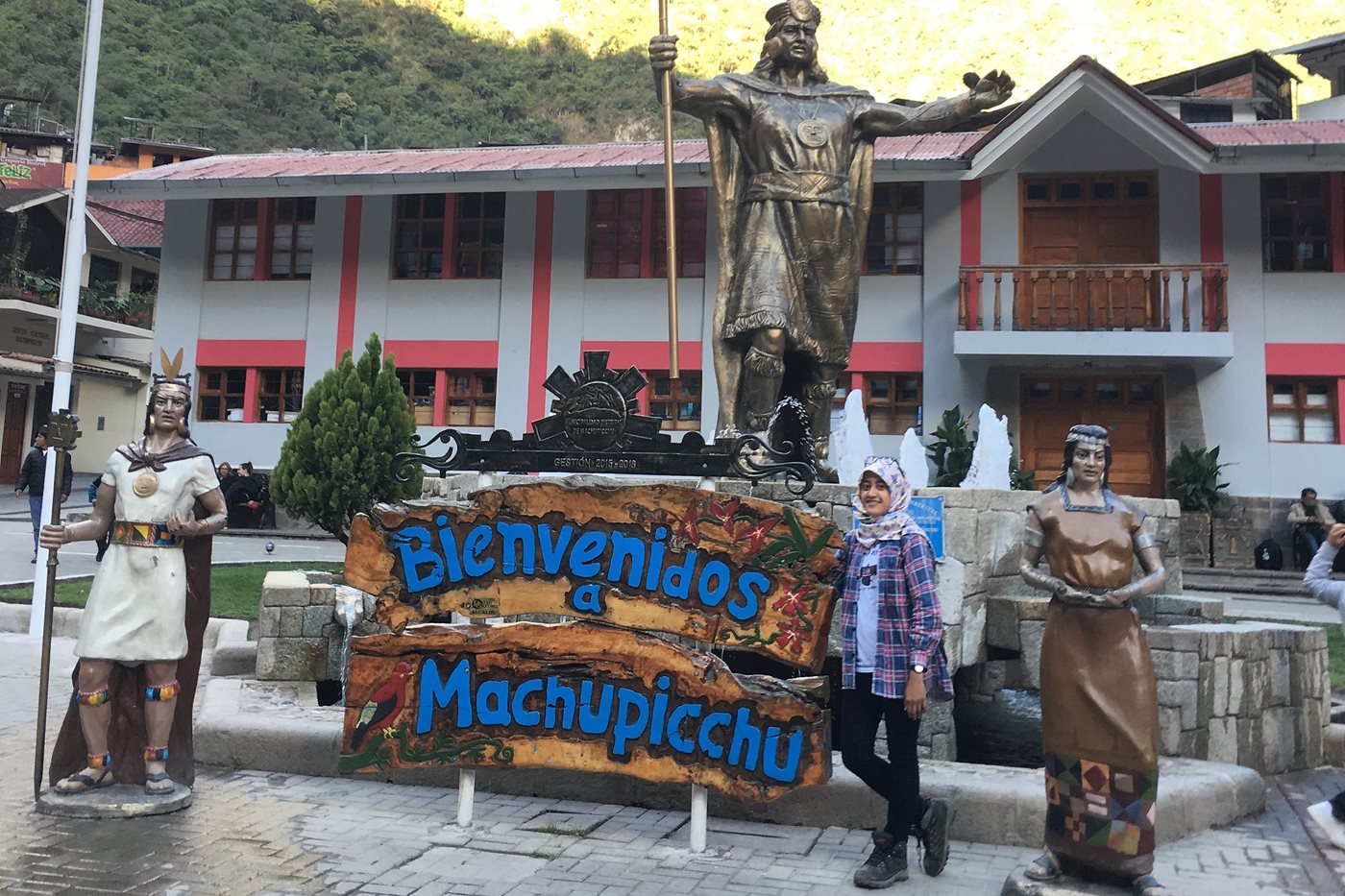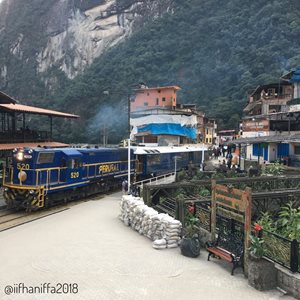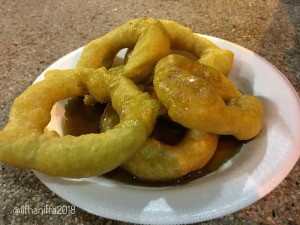November 2018

Machu Picchu has been on my bucket list for a long time. Also, because I have been learning Spanish several months prior my departure to the United States, I was challenged to practice my Spanish in a Spanish speaking country.
I started to plan my trip since winter 2017 to look up the ticket price and the detailed itinerary was arranged since spring break 2018 after I purchased the ticket flight.

Best Time to Visit
Located in the southern hemisphere near equator line makes Peru have two seasons, rainy season during October-April and dry season during April-October. So, SUMMER is the best time and the visit reaches its peak on June-August. In addition, June 24 is annually celebrated as Inti Raymi Day (Festival of the Sun) in Cusco. Unfortunately, I had to leave Cusco at that day because of my flight schedule. So, I could not witness the festival.
What to Prepare
- Be physically prepared is a must because the trip requires a lot of hiking both in Cusco and in MP and the ruins were built in mountainous area. Also, being fit during your trip will prevent you from altitude sickness realizing that Cusco is located at 3,400 meters (11,150 ft) above sea level.
- Suitcase vs daypack. I recommend to you packing your stuffs in daypack (35-40 liters capacity is enough for one week trip) thus you can carry in on your back easily wherever you will go (particularly if you want to exit from airport to kill long layover).
- You do not need to worry about electrical outlet in Peru because it uses the same outlet as in the US.
- Skin protectors (sunscreen, sunblock, petroleum jelly, lip balm, repellent) are must-bring items. Sunglasses, hats, and any shades are important because sunlight in mountain is sometimes excessively shining.
- Temperature in Cusco is 0-20C (32-68F). Bring your warm clothes if you’re not used to live in that temperature range. If you’re gonna buy alpaca sweater, get it at your first day there so you don’t need to bring it from home.
- Waterproof jacket or raincoat, especially if you travel during rainy season. Wind breaker jacket is recommended if any.
- USD/credit card/debit card is acceptable in most of hotels, hostels, restaurants, and tickets. But you still need to bring soles.
- Water bottle is not that important because you won’t find any water fountain. Instead, you need to buy bottled water.
- First aid, especially any medicine for altitude sickness.
1. To Peru
Cusco is the last city before hiking to Machu Picchu and it has a small airport. However, booking a flight from US to Cusco will be more expensive. So, it is highly recommended to book international flight to Lima then take domestic flight to Cusco. Flight using Mexico airlines will have stopover in Mexico City while flight using South American airlines (usually multiairlines with US) will have stopover in South America cities (Bogota, San Salvador, etc). Also, there is a direct flight from Houston to Lima.
Mexican airlines often offer cheaper fare, but you will have a very long layover. I got a best deal from one of Mexican airlines, $405 for roundtrip IAH-LIM (23 kg checked-in baggage included) but with 15-hour layover in Mexico City. Despite its lower fare, it is quite satisfying with its spacious leg room, smooth take-off and landing, and in-flight refreshments. But don’t expect the fancy and comfy personal entertainment because the planes only have a screen each three rows.
2. To and In Cusco
Cusco is approximately 1,100 km (683 miles) away from Lima. You can get there by bus (cheaper but almost 18-hour trip) or by flight (costly but only 1.5-hour trip).
Another way to feel more about Peru is bus hopping (unfortunately, I got know this after booking all the tickets and hostels) which allows you to hop on and off in any places along Lima to Cusco (it even offers a trip until Bolivia). You can enjoy more destinations in Peru with lower price.
Cusco is main city of Incan cultures that makes it has many places worth to visit. To get around, you can use public transportation (don’t expect it will be comfy buses), taxi, or join day tour as I did. If you’re not confident with your Spanish, joining tour will be the best options. Not too costly but get convenience trip.
3. To Machu Picchu
Many ways to get Aguas Calientes, hometown of Machu Picchu, from the super lavish train Hiram Bingham (it costs $475 each way) and taking bus and continued by hiking. Taking train will save your time and energy and safer (especially for non-Spanish speakers). There are two train operators, Peru Rail and Inca Rail. The cheapest fare for Cusco-MP costs $70 each way. To save money, I took train the cheapest train from Ollantaytambo-MP for $45 each way. From Cusco to Ollantaytambo, I took collectivo (similar to shuttle bus) which costs only S./10 ($3) each way.
As a comparison, taking bus trip from Cusco to Santa Maria needs 6 hours but only costs S./15 ($5), then take combi to Hydroelectric Station. If you’re not lucky, the combi driver will drop you off at Santa Teresa and you need to walk to get the station. From the station, you can take train for S./20 ($7) or you can save your money by 3-hour walking to Aguas Calientes. Cheaper but exhausting.
Despite its more expensive fare, trip to Aguas Calientes by train is worth to take. The train has panoramic windows like Amtrak’s observatory car, allowing you to enjoy Andean Mountains view with its several eternal ice-covered peaks. There is a table covered by Inca textile between two rows of facing each other seating. Your trip will be accompanied by traditional music and you will get refreshments made from local ingredients.
Another challenging trip is trekking in Inca Trails for 4D/3N. Although trekking sounds like a low-cost backpacking, you need to pay >$500 to join the group (included porter, meals, permits, etc.)
4. Aguas Calientes-Machu Picchu
Taking bus is quite expensive, it costs $24/person for one-hour roundtrip. Hiking is free, but you’ll need 3 to 4-hour walking for roundtrip. I recommend you to you taking a bus for heading to MP (because it’s an uphill track) and downhill hiking from MP, so your energy keeps full when you explore MP and you can still save $12.

What to Eat and Drink
Peru is paradise of mouth-watering traditional cuisines. I suggest you trying:
- Ceviche: marinated raw (sometimes cooked) fish and seafood in lemon or lime, added by aji (chili peppers), shallots, salt, and cilantro. It is usually served with sweet potato, Inca corn (the grains is really huge!), and other veggies. Ceviche is a common entrée in Latin America and each country has its own version of ceviche. I tried this super delicious food in Punto Azul, Miraflores, Lima for S./35 ($16).
- Caldo de gallina: it’s basically chicken soup and served with egg noddle or pasta and big chopped veggies like carrots and broccoli. Put some spoons of salsa and you’ll taste it yummier. I tried this at San Pedro Market until three times due to its cheap price (a big bowl of it just costs you S./6 ($2)) yet satisfying serving size.
- Alpaca meat: alpaca is one of authentic faunas in Peru, belonging to camelids family. If you see this super cute and fluffy animal, you will resist not to eat. But if you don’t, where else can you find it? I tried deep fried alpaca in Aguas Calientes which costs S./35 ($16). It is served with fried sweet potato, shallots, and Peruvian mayonnaise.
- Cuy (guinea pig): if you don’t have restriction to eat this kind of animal, you have to taste it. Guinea pig is served after being baked, grilled, or deep fried.
- Pollo a la brasa: grilled chicken served with fries and salad. You can order it in 1/8, ¼, ½, or a whole chicken.
- Chifa: is a combination of Chinese and Peruvian food. It looks more Chinese in appearance but tastes more Peruvian. Example of chifa is arroz chaufa (Peruvian-Chinese fried rice).
- Mazamora morada: is one of Peruvian dessert made by purple corn (morada). It looks like glue, but it tastes sweet.
- Picarones: a Peruvian doughnut made from squash and sweet potato and served with sweet syrup.

Peruvian also has unique beverages that you need to try:
- Coca tea dan muña tea: these teas are herbal drink in Andean Mountains which benefit to reduce altitude sickness. Take a sip of it once you arrive Cusco. Their taste and color are similar to green tea.
- Chicha morada: is a Peruvian drink made by purple corn (morada) and added by other herbs. I tried this during taking train to MP.
- Inca kola: is Peruvian soft-drink with bright yellow color and bubble gum taste.
- Chicha maracuya: is made from maracuya (passion fruit). It’s pale yellow colored and can get rid of your thirst on a very sunny day in Cusco. A medium cup of it costs only S./1(30 cents) in San Pedro Market.
If you’re an on-budget traveler, hostel is the best option to stay. If you do solo traveling, you can book dormitory room, most of hostels have female and male dormitory that make you feel safe and comfortable. You can get a bed in dormitory for < $15 per night (breakfast included). In Lima, we spent a night in Miraflores and a night in historical area of Lima.
Staying in dormitory room will allow you to find new friends from various countries so your trip will be more colorful.
What to Bring Home
In addition of your precious experiences, you may want to bring home some Peruvian stuffs.
1. Alpaca products, such as sweater, beanie, blanket, ponchos, gloves, etc. If you find for quality (buying real 100% alpaca), you may get them at reliable store. FYI, one of destinations of the tour I joined is the workshop where the staff explained us how to distinguish real alpaca wool and synthetic one (made by polyester). But if you’re on budget (like me), you can buy them with cheaper price in market or street vendors, but you’ll get synthetic or semi-alpaca wool ones.
2. Local agricultural products, such as coca tea and muña tea leaves, quinoa, Inca corn, etc. Please make sure the customs and borders rule in your destination because in some countries, you are not allowed to bring plants.
3. Inca jewelry made of silver and ornamented by colorful stones.
4. Miscellaneous Peruvian handicrafts like stuffed animals of alpaca, keychain, magnet, T-shirt, sling bag, etc.
Don’t worry to do shopping in traditional market if you can’t speak Spanish at all because some vendors can say numbers in English and you can use sign language. But, having basic Spanish conversation can bring you benefits (get cheaper prices, get free stuff, etc.).
Peru is safe for tourists (even non-Spanish speaking tourists). It is one of the best place to relax your mind and satisfy your tummy. Taking a Peru trip is one of the best ways to spend my savings.
Buen viaje!
---
Mifrokhah Hanidda
Mifrokhah is a masters student in the Geotechnical Engineering program.